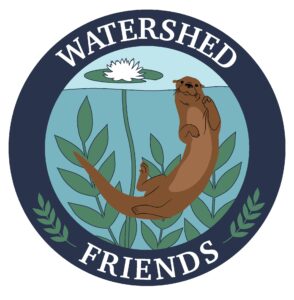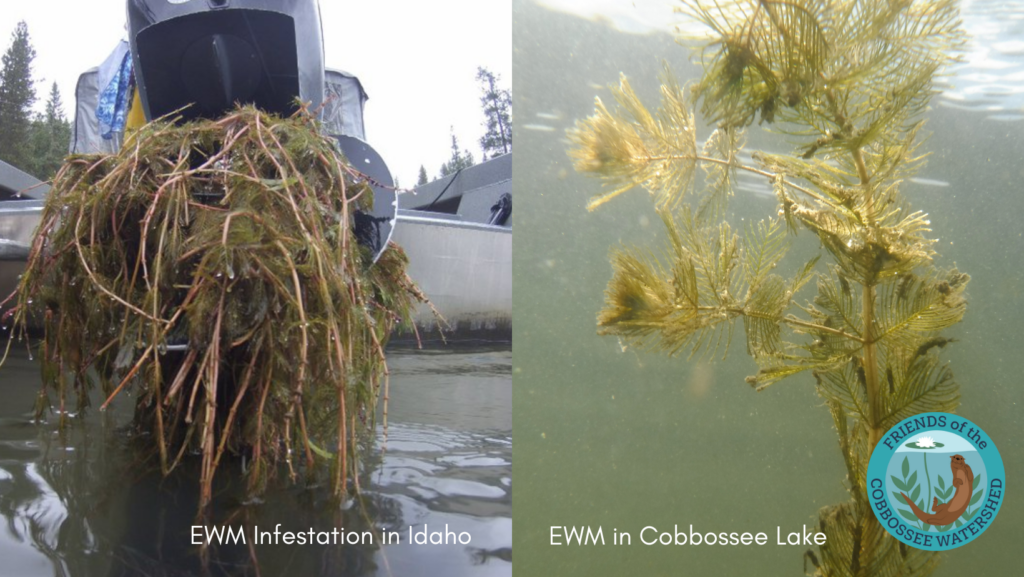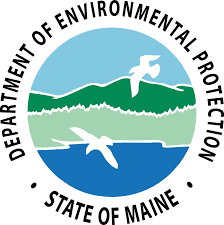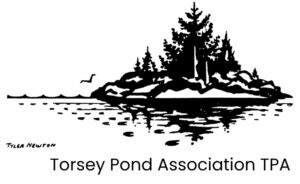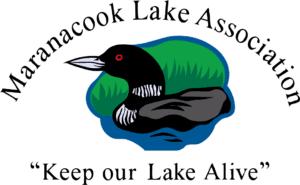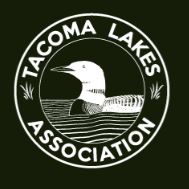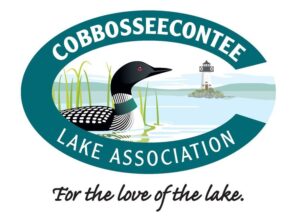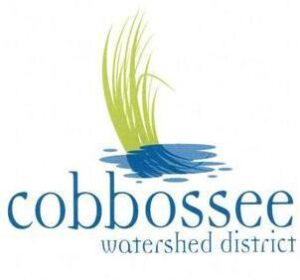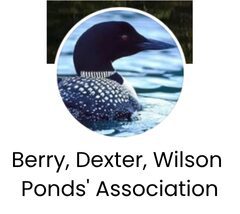Map Updated: July 2025
Watershed Friends’ plant survey and volunteer efforts have identified current areas of Aquatic Invasive Plant Species growth in 2025.
Cobbossee Outlet - Pond Rd.
In 2023, moderately dense patches and singular plants of EWM were found spreading from the lake side of the bridge, at the unofficial Manchester launch site, and to the dam. Actions have been taken to help mitigate the spread of the plants.
An herbicide treatment was applied Friday, August 11th, 2023. The outlet is still currently a Surface Use Restricted area (SUR) and the infestation is still being monitored.

In collaboration with the town of Manchester, a temporary fence has been erected to keep the public from inadvertently spreading these invasive plants while we work with the Department of Environmental Protection to remove the plants and return the outlet to its natural state. Until then, please avoid this area.
- No swimming or jumping off the bridge
- Keep your pets out of the water
- Find a new location to launch kayaks and paddle boards for the time being
- Do not fish off the bridge or to the dam
These are temporary measures while the plants are managed. Please contact the town of Manchester with any questions or concerns about this site, as the land is town property.
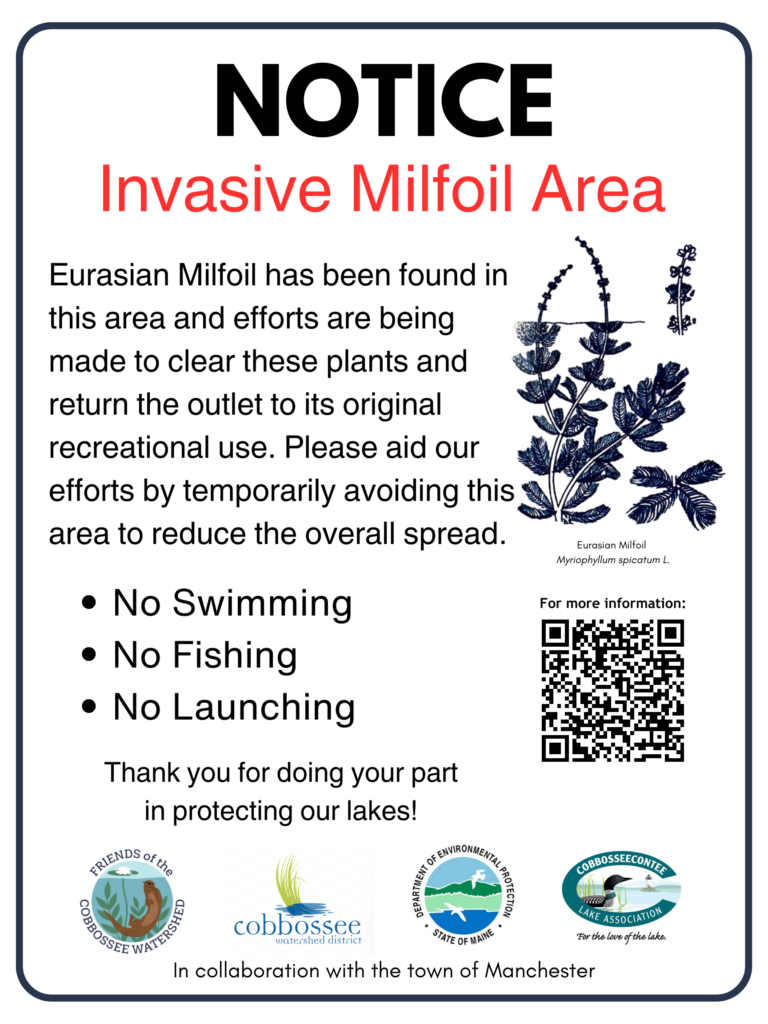
Efforts in the outlet are supported by a community of stakeholders, including the Cobbosseecontee Lake Association, the Cobbossee Watershed District, Maine DEP, and the town of Manchester.
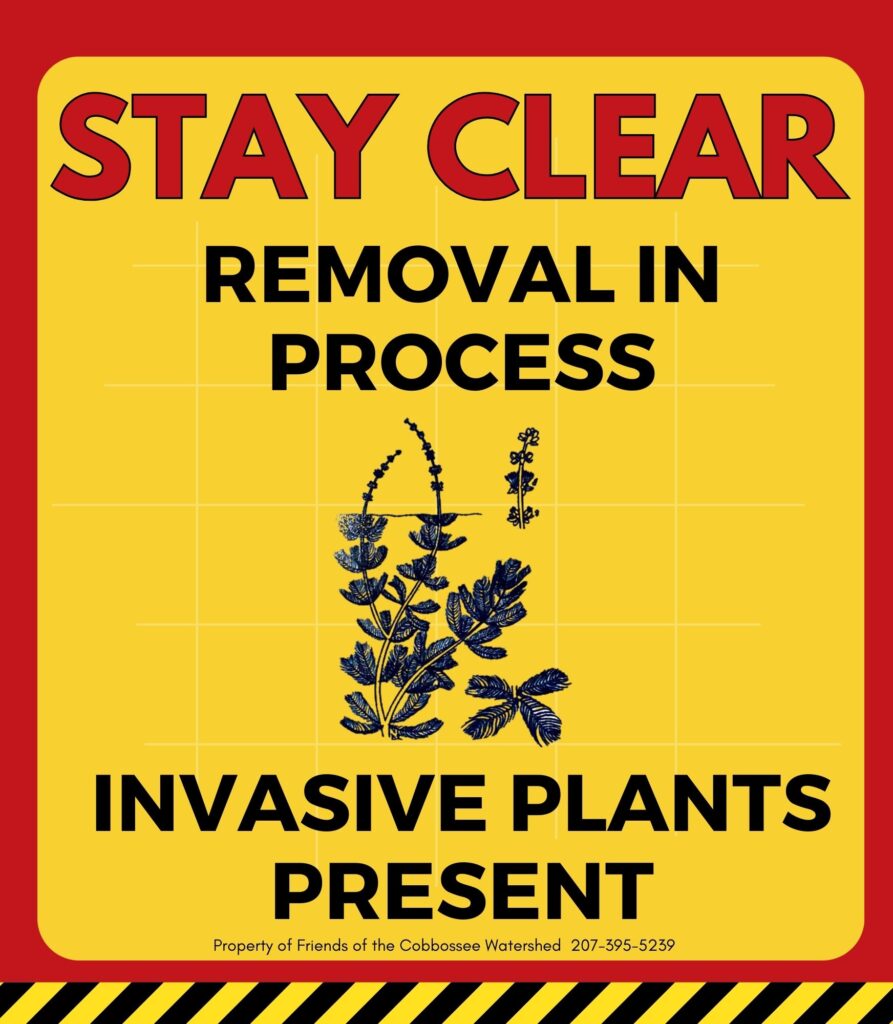
You may see signs on Cobbossee Lake or in the stream with the following message:
Stay Clear. Removal in Process. Invasive Plants Present.
This designates areas where our teams are still removing or otherwise managing invasive species. Giving these markers a wide berth will allow us to manage the infestation most effectively.
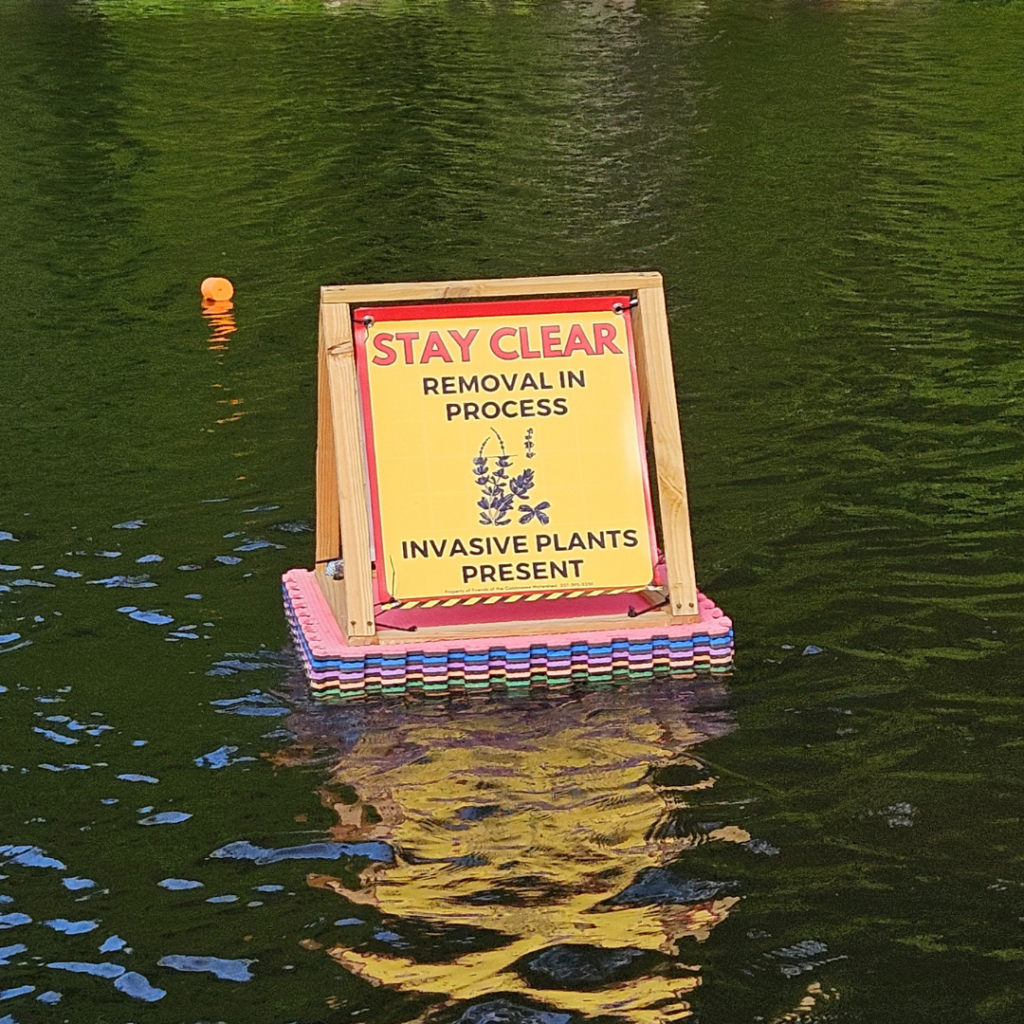


In 2018, plant surveyors on Cobbosseecontee Lake found Eurasian Watermilfoil (Myriophyllum spicatum L. or EWM), a non-native plant originally from Europe and Asia. This plant can quickly spread throughout a body of water due to the absence of natural competitors. If not managed, an EWM infestation can have severe consequences, including the formation of dense mats that hinder boating, fishing, and swimming. Additionally, it can degrade water quality and reduce the value of shoreline properties.
To manage EWM in Cobbossee, various control methods have been employed, including manual removal of the plants, benthic barriers, herbicide treatments, annual surveys, and Courtesy Boat Inspections conducted by trained staff and volunteers. Despite these efforts, as of 2023, EWM has also been detected in Cobbossee Stream. Due to the nature of the plant, EWM spreads easily via fragmentation, meaning small portions of the plant can be broken off and will re-root in a new location.
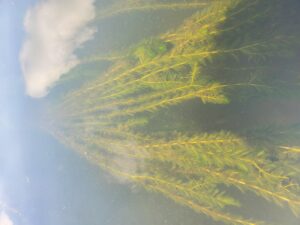
Herbicide Treatment 8/11
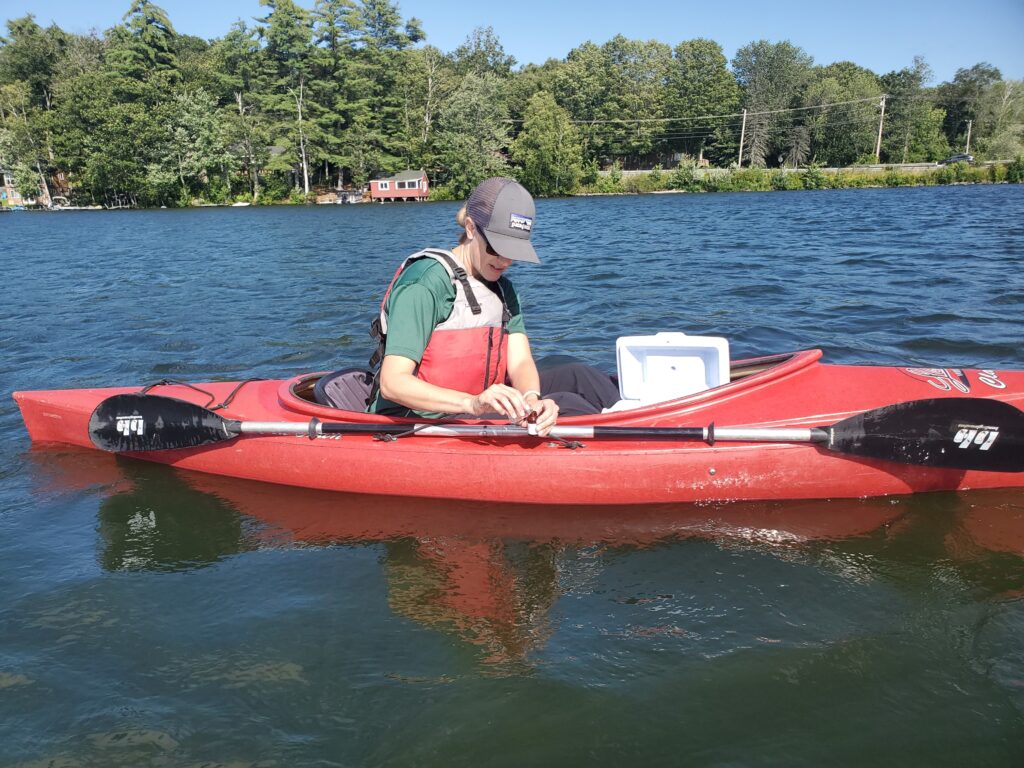
An herbicide treatment took place August 11th, covering known Eurasian Water Milfoil locations just past the Pond Rd Bridge and to the dam.
Maine DEP contracted with Solitude Lake Management for the professional application of ProCellaCOR, a selective herbicide. For more information on the organization or the herbicide used CLICK HERE.
The post-application procedure includes water tests to confirm that the herbicide dissipates within the appropriate timeframe. The first water sample was taken by DEP a few hours post-treatment. Another sample was taken the week of August 14th. No deviations from standard water quality were detected.
FOCW staff have been surveying the area to determine the effectiveness of the treatment, EWM plants are showing advanced stages of decay. FOCW and all our partners thank you for your help in avoiding this area to reduce the spread and help protect our lakes!
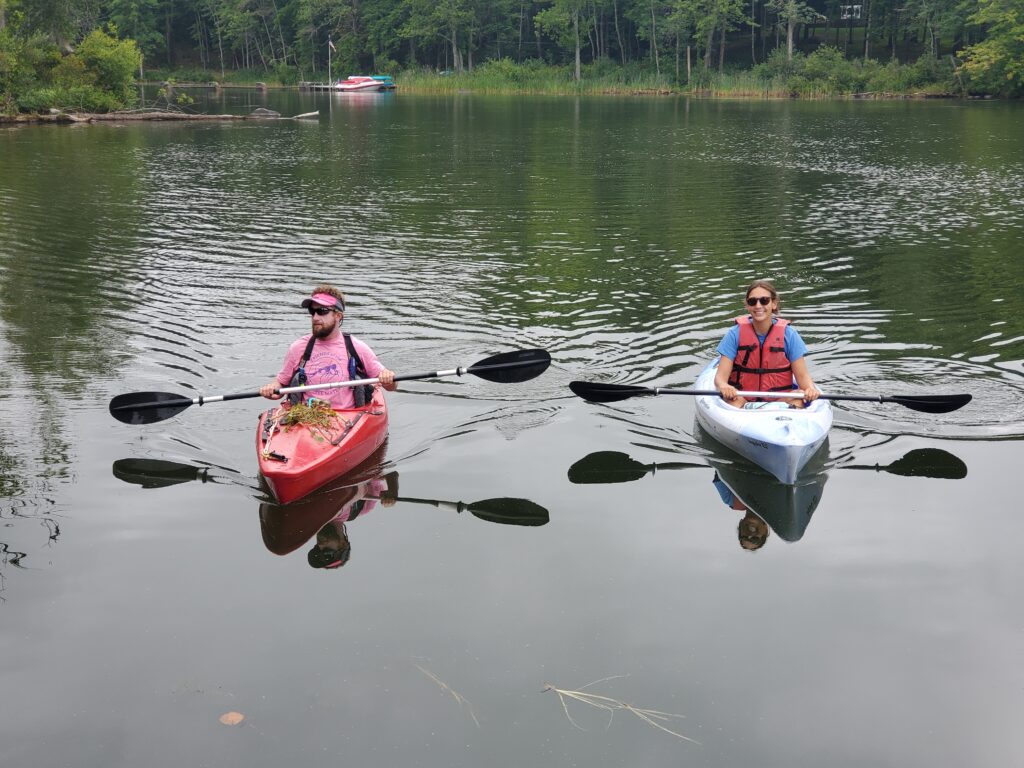
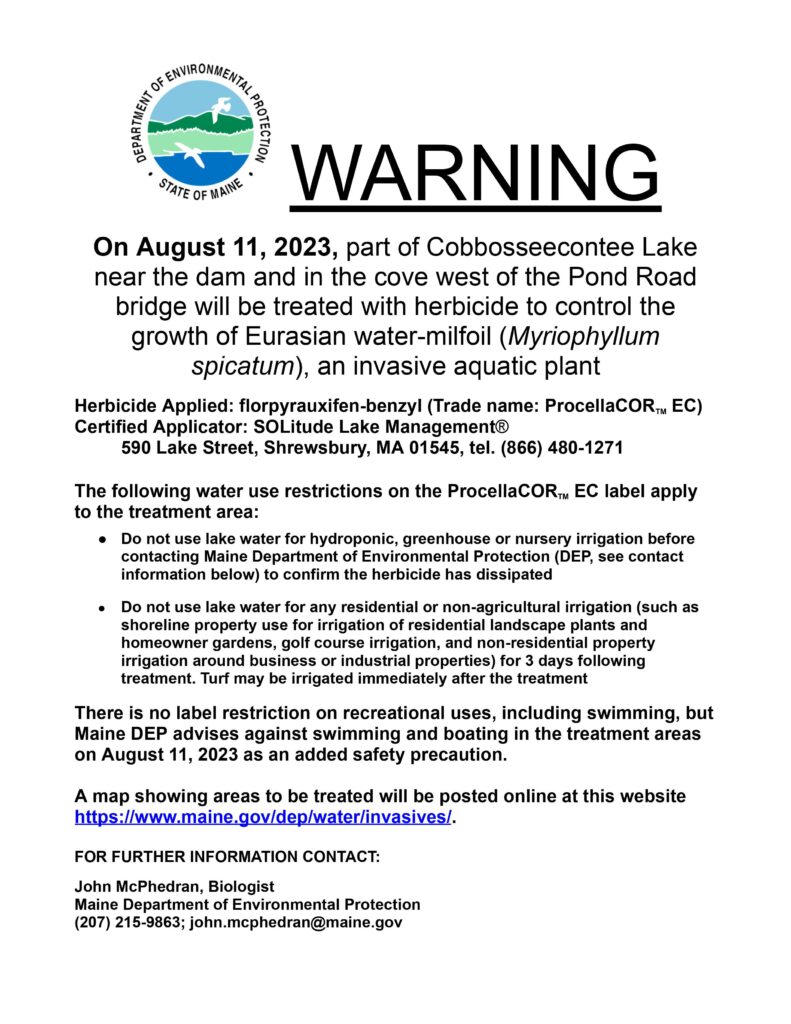
Links to our partners websites:
